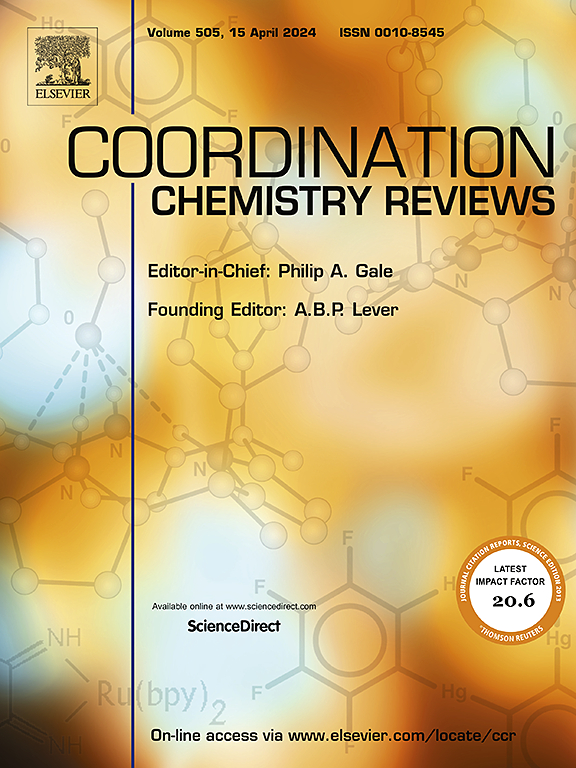Gold clusters: A promising NIR-II probe for bioimaging and biosensing
IF 20.3
1区 化学
Q1 CHEMISTRY, INORGANIC & NUCLEAR
引用次数: 0
Abstract
Optical imaging and biosensing in the second near-infrared window (NIR-II, 1000–1700 nm) have gained significant interest due to their high signal-to-noise ratio (SNR) and excellent spatial and temporal resolution. These features enable accurate monitoring and treatment of deeper bio-pathological processes. Gold nanoclusters (Au NCs) have emerged as promising candidates for NIR-II emission, offering advantages such as their ultra-small size, outstanding biocompatibility, large Stokes shift, and favorable photoluminescence (PL) properties. This review begins by highlighting the benefits and applications of NIR-II luminescent Au NCs in bioimaging and biosensing. We then explore current strategies to enhance the photoluminescence quantum yield (PLQY) of Au NCs, including techniques such as metal doping, ligand engineering, and the aggregation-induced emission (AIE). Furthermore, we discuss advancements in red-shifting the emission wavelength of Au NCs. Our goal is to provide researchers with fresh insights into improving and fine-tuning the photoluminescent properties of Au NCs, thereby broadening their potential applications in NIR-II bioimaging and biosensing.

求助全文
约1分钟内获得全文
求助全文
来源期刊

Coordination Chemistry Reviews
化学-无机化学与核化学
CiteScore
34.30
自引率
5.30%
发文量
457
审稿时长
54 days
期刊介绍:
Coordination Chemistry Reviews offers rapid publication of review articles on current and significant topics in coordination chemistry, encompassing organometallic, supramolecular, theoretical, and bioinorganic chemistry. It also covers catalysis, materials chemistry, and metal-organic frameworks from a coordination chemistry perspective. Reviews summarize recent developments or discuss specific techniques, welcoming contributions from both established and emerging researchers.
The journal releases special issues on timely subjects, including those featuring contributions from specific regions or conferences. Occasional full-length book articles are also featured. Additionally, special volumes cover annual reviews of main group chemistry, transition metal group chemistry, and organometallic chemistry. These comprehensive reviews are vital resources for those engaged in coordination chemistry, further establishing Coordination Chemistry Reviews as a hub for insightful surveys in inorganic and physical inorganic chemistry.
 求助内容:
求助内容: 应助结果提醒方式:
应助结果提醒方式:


